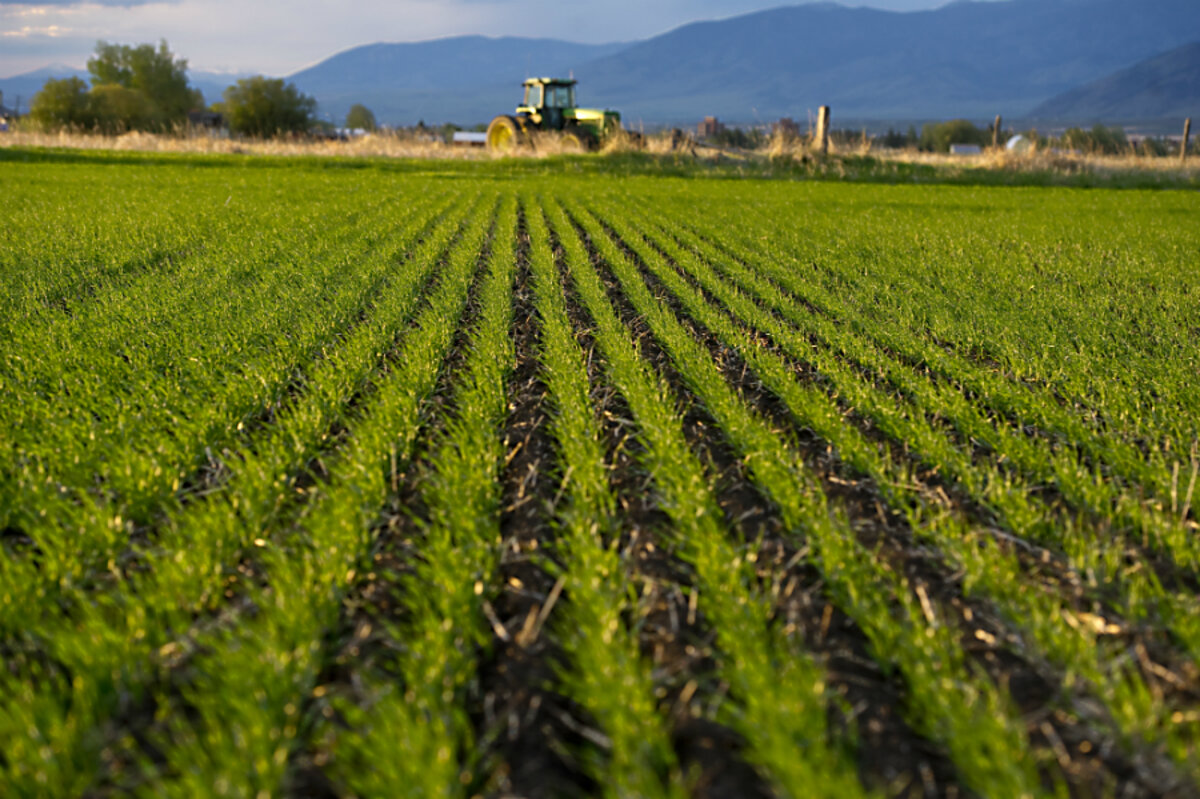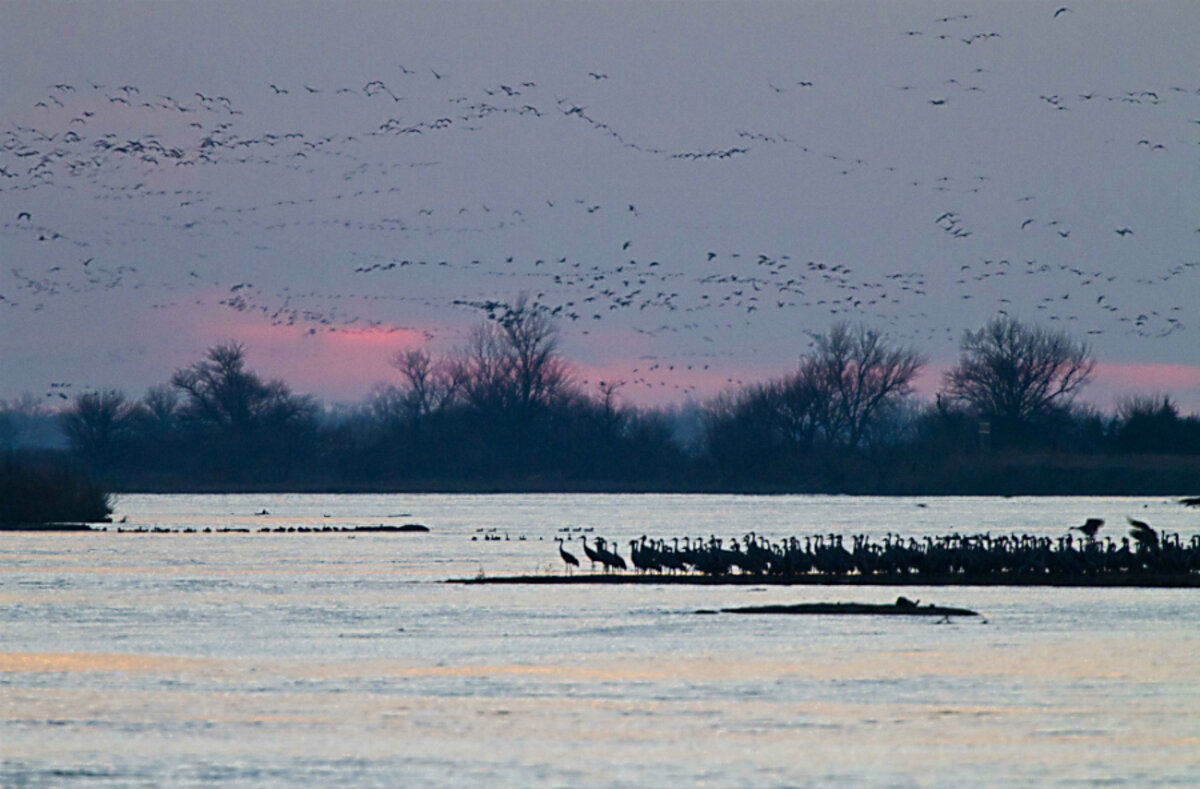How water swaps help the West manage a precious resource
Loading...
When a market for trading water rights opened in central Nebraska last year, one of the initial bidders wasn’t a corn farmer, or even a water user at all in the traditional sense. It was the Platte River Recovery Implementation Program, a conservation group investing to replenish the region's major river, the Platte.
By buying some water and then not using it, the group is allowing more to stay in the river.
The move bucked tradition, for sure. Typically, water rights aren’t traded at all or they are swapped among farmers. But the West may be at the dawn of a new era in water management.
Markets for water trading are on the rise, backed by many conservationists and farmers alike. They say there’s a major opportunity here if done right – the chance to make the most of a precious resource.
The idea is to depart from systems of largely fixed water rights for the farms that use 80 percent or more of water in the West. Instead, markets can help water flow to where it’s most valuable and needed – and promote conservation by farmers in the process. Farmers who learn to get by with less water make extra income by selling or leasing their surplus.
“Nationwide we’re seeing more and more water transactions, and the number of participants in these markets is going up,” says Reed Watson, executive director of the free-market conservation think tank Property and Environment Research Center in Bozeman, Mont.
But there’s no guarantee that water markets will be a success. The fact that a conservation group felt the urge to conserve Platte River water at all hints at the challenge: Without safeguards, the combination of farms and growing cities could easily start sucking up more water than nature can provide. Rivers and aquifers can run low.
In short, water markets hold great promise, but states across the West are learning that markets also take some careful management to do right.
And they’re working at it: Nurturing water trades remains a priority despite heavy snows and rains this winter, because groundwater tables remain under stress.
'Something needs to be done'
“There’s pretty widespread acknowledgement that something needs to be done,” says Brian Richter, chief water scientist with The Nature Conservancy. “But it’s going to take time. It can be politically contentious to make changes with anything to do with water.”
Colorado offers a warning about unfettered trades. While many consider Colorado’s water markets the most well-developed in the country, some rural communities turned into virtual ghost towns when Denver suburbs bought their water rights.
“You don’t have to look any further than our past history, that all water rights in our state originated in agriculture and as cities began to pop up and grow more water rights were converted,” says Marc Arnusch, a third-generation farmer near Keenesburg, Colo. “We certainly can’t gut our rural economies to the benefit of our urban economies, but I believe this water will continue to gravitate to our urban cousins for the rest of time.”
Conservation groups hope to work hand-in-hand with farmers to prevent worst-case outcomes.
The Nature Conservancy is seeking investors to help it buy and manage a 10-year water rights portfolio modeled after a project the group helped create in Australia’s Murray-Darling basin. Some of those rights would be sold or leased to generate revenue for the investors. Others would be used for environmental purposes – such as leaving water in-stream for fish.
While managing its water-rights portfolio, The Nature Conservancy would also help farmers employ conservation methods, potentially creating surplus water for farmers to sell or lease.
New income potential for farmers
“We’re very explicit that it’s our intention to keep farmers on the ground farming,” Mr. Richter says. “What we’re really shooting for is trying to make them more profitable by creating opportunities for them to grow crops and creating the opportunity for them to grow water.”
For environmental groups, keeping US agriculture productive is key. The relatively rich farmland of America, after all, can produce bounteous harvests more efficiently than many other nations.
But the idea of non-farm investors participating in agricultural water markets raises ethical questions. If markets open up, how can rural economies protect enough of their resources if thirsty cities dangle wads of cash, or if resource speculators become key middlemen? And should it really be a philanthropy’s job to make sure rivers have enough water for wildlife protection?
“I think [conservation groups] are filling a void that the states have left,” says Richael Young, co-founder and president of water market company Mammoth Trading. “So in an ideal world that would be something that our governments would take care of and we wouldn’t have to rely on nonprofits.”
Water districts are also taking their own actions. Many now have triggers for trades out of a watershed, to check for undesirable effects on the local economy. In some cases, other rights holders can object to transfers.
As Ms. Young sees it, green groups are playing a helpful role at present, correcting state failures to get a handle on water-management challenges. “We’re sort of evolving from the old school ‘buy and dry’ and trying to create these win-win solutions.”
Steps of progress
Where markets are up and running, many show promise.
•In central Washington State, low water levels in the Yakima River meant farmers with “junior rights” saw their supplies curtailed in 2015 to ensure those with more senior rights received their legally awarded amounts. But thanks to an existing water market, junior rights holders like those in the Roza Irrigation District leased water to keep fruit-tree production relatively steady.
•Colorado’s South Platte basin showcases a trend toward water leasing, which allows farmers to offer water on the market without permanently giving up their rights. In the South Platte, which is one of the most active water markets at $57 million in transactions in 2015, leasing now accounts for 80 percent of water volume traded, according to consulting firm WestWater Research.
•In Nebraska,��the Twin Platte��Natural Resources District deployed an automated trading platform, which Young��created through a federal grant while at the University of Illinois,��to make sure that cumbersome paperwork doesn’t discourage trading. Ann Dimmitt, a manager for the district, says the market is succeeding at shifting water from unproductive, water-intensive soil to acres where farmers need less to maintain yields.
Steps like those are helping to meet a need for better water management across the West – and the need is growing.
The Cornhusker State, for instance, must replenish the Platte River under a state law, and officials worry about the health of the Ogallala Aquifer – a rapidly depleting major water source underlying most of Nebraska and parts of seven other states.
Challenges: climate, demographics, old laws
Meanwhile, scientists say climate change is expected to bring more frequent and severe droughts. In 2012, Ms. Dimmitt’s district got just 10 inches of rain, less than half its historical average.
“I’m curious to see where we’re going to be in 2022. We had that drought in 2002 and then the one in 2012,” she says. “Living through that, now people farm differently. They’re very conscientious. Not that they weren’t before – but less than 10 inches? That’s desert.”
Between climate change and urban population growth, the West’s water challenges look hard to meet without changing old ways. Many state water laws operate on a “use it or lose it” philosophy, which gives farmers little incentive to emphasize conservation. At the same time, water in the West is often over-allocated, meaning there’s not enough to supply all the legal claims.
Water markets hold the potential to change that dynamic, allowing crops and conservation to coexist.
The problem: The markets so far are fragmented and small, and face challenges tracking water use.
For markets to work well, such tracking is vital, says Ms. Young of Mammoth Trading. Rights holders need to know how much water they and others are entitled to. Water managers must be able to monitor whether water-rights owners use only what they’re allowed. And they need to understand the interactions between groundwater and surface water – such as how pulling groundwater in one place affects a surface-rights owner in another.
Many states flunk those tests.
In California, for example, groundwater data is so poor that regulating water use has been all but impossible. Only 3 percent of the state’s water is traded. Under pressure from drought, the Golden State passed a law in 2014 to collect groundwater information. But gathering the data and then ensuring rights holders stay honest will take considerable monitoring and expense.
In Montana, Mick Seeburg and other farmers grew concerned about rapid development in the area around Bozeman, when they heard that some new homeowners had to double their well lengths to reach declining groundwater.
Late last year, Montana’s state Supreme Court issued a ruling that could help water markets address the challenge. The court outlawed a loophole that exempted housing developments from needing permits for wells that affect the local water table. Now such projects must purchase water from another user to replace whatever they take from the ground.
Shifting politics
And beyond the courts, the political landscape surrounding water is changing. In a state like Montana, where support from the agriculture community or Republicans is vital for water-rights changes to pass, new policies oriented toward conservation might have seemed fanciful in the past, says Laura Ziemer, senior counsel at Trout Unlimited. But that’s no longer the case in Big Sky Country and other western states.
“Since the early 2000s we’ve had a lot more frequent back-to-back drought years,” Ms. Ziemer says. “I think that recognition that we’re going to be living with drought and we need to have some preparedness for it is driving some of these changes. What they really are is recognizing is that water is a finite resource.”
To Mr. Seeburg, the farmer near Bozeman, a water market simply looks pragmatic in the face of strained water supplies. He’s on a committee exploring a water exchange system for the Association of Gallatin Agricultural Irrigators.
“I don’t think it’s possible to fix it all, but I think it’s possible to keep it from becoming a disaster,” he says. “My crystal ball about what the valley is going to look like in 2050 is pretty cloudy, but it’s going to need water and it’s going to need the river flowing.”
[Editor's note: This article has been updated to clarify who set up the automated trading system in Nebraska's Twin Platte district.]
This is the fourth article in a series on solving water challenges in the American West.
Part 1:��West's challenge is still water scarcity, wet winter or not
Part 2:��In arid Southwest, cities expand but use less water��
Part 3:��America's biggest water users – farmers – learn to use less of it
Part 4:��How water swaps help the West manage a precious resource
Part 5:��Why solar panels bloom in Southwest's land of hydropower��
Part 6:��For water users on Colorado River, a mind-set of shared sacrifice






